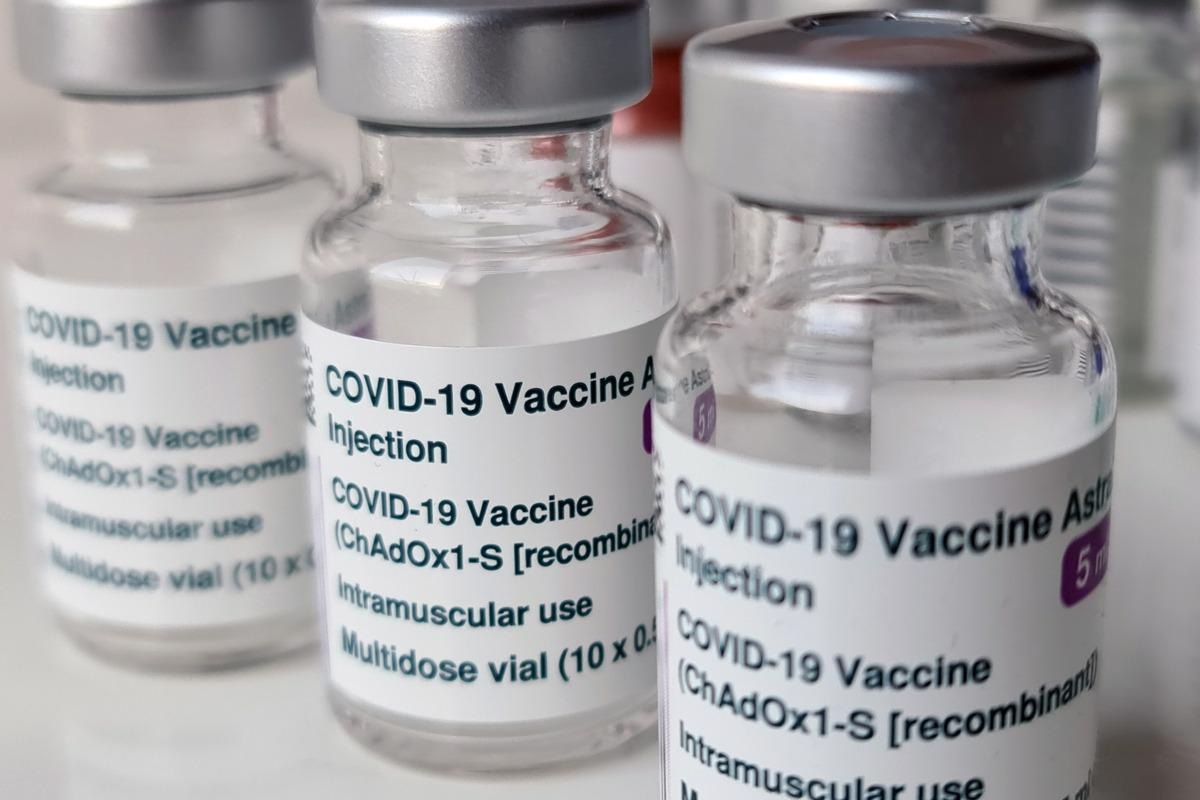Effectiveness of ChAdOx1-S COVID-19 booster vaccine
In a recent study posted to the medRxiv* preprint server, researchers assessed the effectiveness of ChAdOx1-S coronavirus disease 2019 (COVID-19) booster vaccination.

The ChAdOx1-S booster vaccine has been globally used to combat severe acute respiratory syndrome coronavirus 2 (SARS-CoV-2) infection and disease severity. However, there is a lack of research regarding the effectiveness of this booster vaccine in the real world.
About the study
In the present study, researchers estimated the ChAdOx1-S booster vaccine effectiveness (VE) against SARS-CoV-2 symptomatic disease and related hospitalization post-infection with the SARS-CoV-2 Delta or Omicron variants.
A negative case-control design was employed to estimate the VE of the ChAdOx1-S booster vaccine. The team compared the likelihood of vaccination in symptomatic polymerase chain reaction (PCR) positive cases to that in symptomatic individuals who tested SARS-CoV-2 negative. Data related to all positive PCR and liver function tests (LFTs) and negative PCR tests were obtained from symptomatic persons with a diagnosis reported between 25 November 2020 and 17 February 2022. For individuals who reported more than one negative test result, one was selected for further analysis.
The likelihood of an individual receiving a ChAdOx1-S booster vaccine post-primary vaccination with a ChAdOx1-S dose was estimated by analyzing data on all adults aged 18 years and above who were vaccinated with the ChAdOx1-S primary vaccine and either the ChAdOx1-S or the BNT162b2 booster vaccine. The team also obtained sequenced PCR-positive samples and whole-genome sequences. The S-gene target status resulting from PCR-testing was used to identify the variant of infection. SARS-CoV-2 Delta infection was correlated to a positive S-gene target status, while Omicron BA.1 infection was correlated to S-gene target failure (SGTF).
The team defined patient cases as Delta or Omicron according to whole-genome sequencing, genotyping, and SGTF status. The analysis of Delta cases was performed between 13 September 2021 and 9 January 2022 and that of Omicron cases between 29 November and 17 February 2022.
Hospital inpatient admissions were identified along with related patient data. Furthermore, for the pillar 2 samples, hospital admissions having a discharge diagnosis of ICD-10 acute respiratory illness (ARI) with a sample tested 14 days before and up to two days after hospitalization were identified. On the other hand, for the pillar 1 samples, the team considered admissions having an ICD-10 coded ARI discharge diagnosis with the sample collected one day before or two days after hospitalization.
Results
A total of 43,171 individuals received a ChAdOx1-S booster dose, while 13,038,908 individuals received a BNT162b2 booster dose. The ChAdOx1-S booster recipients were more likely to be health and social care workers, female, in a clinical risk group, or belonged to the immunosuppressed group. Also, among adults aged 40 years and above, there were 457,377 negative and 434,514 positive tests with a diagnostic test date of 10 days after symptom onset.
The results show that after 25 or more weeks since primary vaccination with the ChAdOx1-S vaccination schedule, the VE against symptomatic disease post-SARS-CoV-2 Omicron infection was 8.0% and 19.5% among individuals aged 40 to 64 years and 65 years and above, respectively. One week after receiving the ChAdOx1-S booster vaccine, the VE against symptomatic infection was 61.2% among individuals aged 40 to 64 years, while that among BNT162b2 booster recipients was 58.2% for the same age group. However, 15 weeks or more after booster vaccination, VE reduced to 37.2% for the ChAdOx1-S booster and 30.6% for the BNT162b2 booster.
The team also observed comparable levels of protection against symptomatic infection among individuals aged 65 years and above. After receiving the booster dose, the VE of ChAdOx1-S rose to 66.1%, and the VE of BNT162b2 increased to 68.5%. This protection subsequently decreased to 44.5% and 54.1% for ChAdOx1-S and BNT162b2 recipients five to nine weeks post-administration, respectively.
Data from the pillar 1 and pillar 2 tests were used to analyze the protection provided by the ChAdOx1-S booster vaccine against hospitalization due to Delta or Omicron infection. Among individuals aged 65 years and above, 61.0% protection against Omicron-related hospitalization was observed 25 weeks post the second vaccine dose. This VE against hospitalization increased to 82.3% one or more weeks post receipt of the ChAdOx1-S booster vaccine, while the VE was 90.9% post receipt of the BNT162b2 booster vaccine.
Furthermore, the team found that among individuals aged 65 years and above, protection against Delta-related hospitalization was 73.4% 25 weeks after receiving the second vaccine. One week after administering the ChAdOx1-S and BNT162b2 booster vaccines, the VE against Delta-related hospital admission improved to 80.9% and 93.9%, respectively.
Overall, the study findings showed that the ChAdOx1-S booster vaccine provided higher protection against SARS-CoV-2 disease severity than the other approved booster vaccines.
*Important notice
medRxiv publishes preliminary scientific reports that are not peer-reviewed and, therefore, should not be regarded as conclusive, guide clinical practice/health-related behavior, or treated as established information.
- Kirsebom, F. et al. (2022) "Effectiveness of ChAdOx1-S COVID-19 Booster Vaccination against the Omicron and Delta variants in England". medRxiv. doi:
https://doi.org/10.1101/2022.04.29.22274483 https://www.medrxiv.org/content/10.1101/2022.04.29.22274483v1
Posted in: Medical Science News | Medical Research News | Disease/Infection News
Tags: Coronavirus, Coronavirus Disease COVID-19, covid-19, Diagnostic, Gene, Genome, Genotyping, Hospital, Liver, Omicron, Polymerase, Polymerase Chain Reaction, Research, Respiratory, Respiratory Illness, SARS, SARS-CoV-2, Severe Acute Respiratory, Severe Acute Respiratory Syndrome, Social Care, Syndrome, Vaccine

Written by
Bhavana Kunkalikar
Bhavana Kunkalikar is a medical writer based in Goa, India. Her academic background is in Pharmaceutical sciences and she holds a Bachelor's degree in Pharmacy. Her educational background allowed her to foster an interest in anatomical and physiological sciences. Her college project work based on ‘The manifestations and causes of sickle cell anemia’ formed the stepping stone to a life-long fascination with human pathophysiology.
Source: Read Full Article
